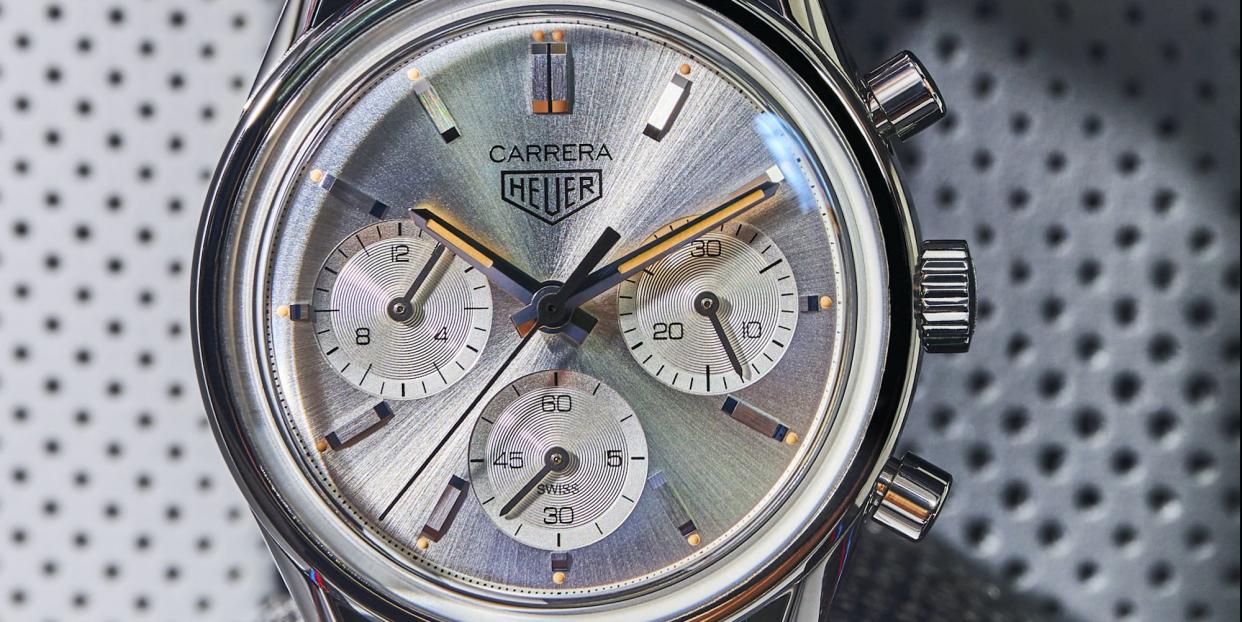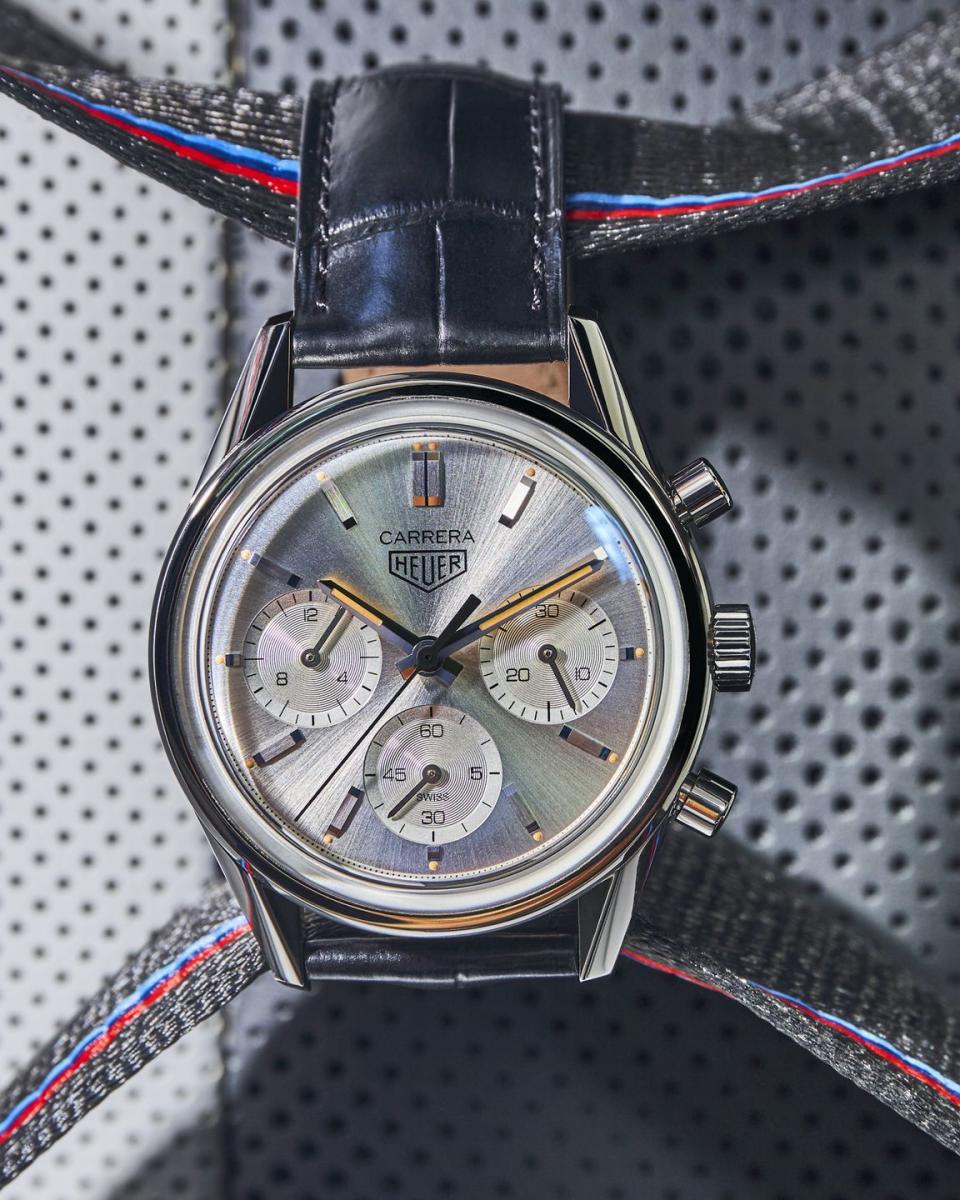Old Tech Meets New in the Hunt For Faster Laps


How to go faster? It’s the foundational pursuit of racing. Through the mid-20th century, the answer looked something like this: a stopwatch, basically. Usually affixed to a driver’s wrist, the watch could track lap times to a fraction of a second. With that information, drivers could tweak their technique or adjust a car’s setup to eke out improvements. Some watches even had a tachymeter scale, which allowed timed laps to be converted to average speed on the fly. But this TAG Heuer Carrera 160th-anniversary piece represents the racing watch at its most elemental: a three-register chronograph that tracks elapsed seconds and tabulates minutes (your lap time). This modern interpretation of Heuer’s classic chronographs, which were beloved by the racing set in the sport’s most glamorous age (think Lauda, Regazzoni, Rindt, and Mario), keeps that classical form but brings the watch up to a larger, contemporary size, with a robust modern movement.
This story originally appeared in Volume 7 of Road & Track.
SIGN UP FOR THE TRACK CLUB BY R&T FOR MORE EXCLUSIVE STORIES

Of course, in time, the wristwatch was replaced by ever-more-complex solutions like the Garmin Catalyst, technology’s latest response to the go-faster question. But unlike competitors’ in-car units, the Catalyst actually tells you how to go faster. After a session, the Catalyst uses video it records and onboard GPS data to analyze your lap. The Garmin identifies three opportunities for improvement and, the next time you’re out, verbally reminds you when it’s time to execute them. Plus, the display—mounted to your dash or windshield—lets you know when you’ve set a “new best” in a corner, a sector, or a lap. This real-time feedback speeds up the learning process, allowing amateur drivers to improve in the moment rather than hunch over a laptop and crunch data after they’ve left the driver’s seat.
So should you spend your money on old-fashioned charm or the new hotness? Well, when it comes to racing’s fundamental challenge, it couldn’t hurt to have both.
You Might Also Like

